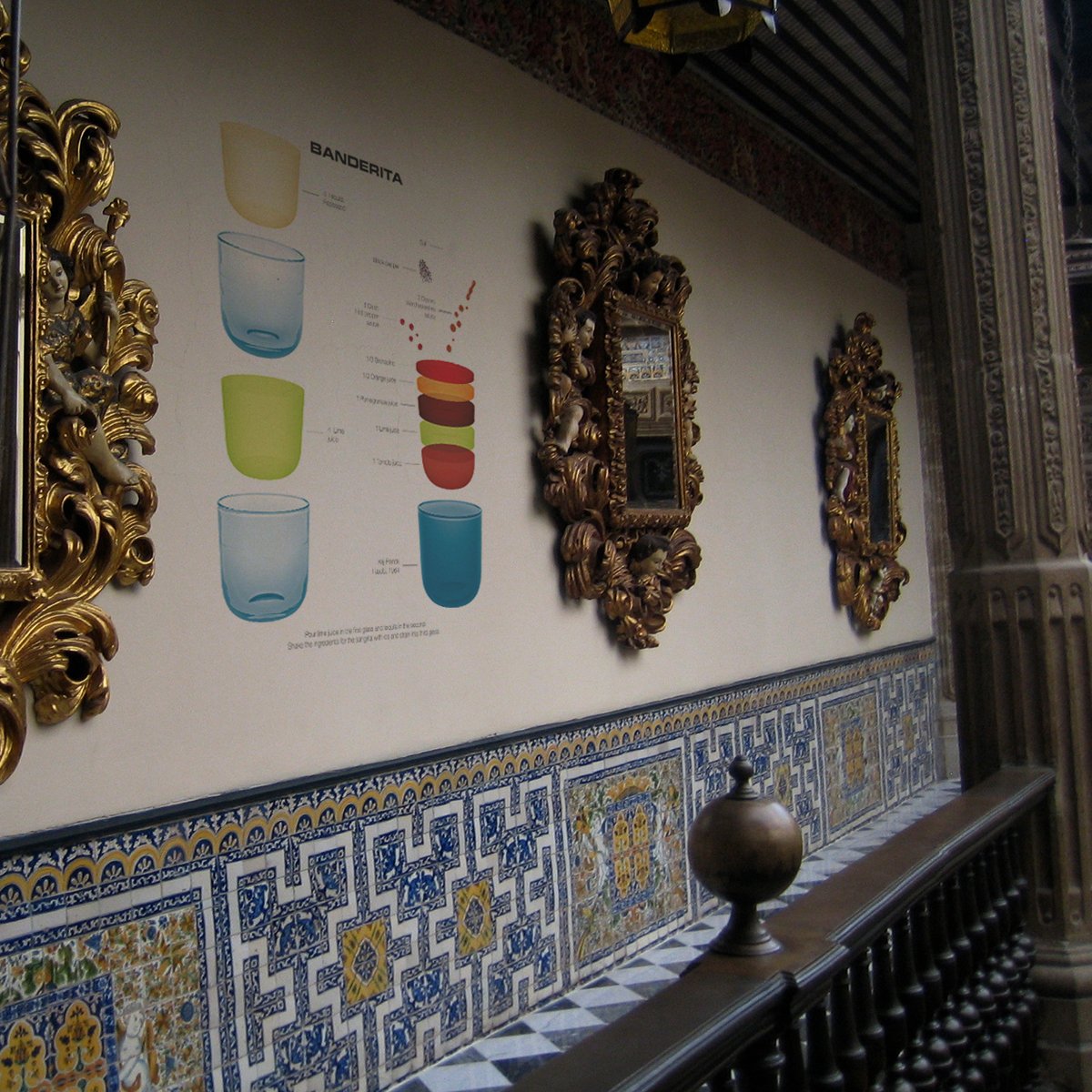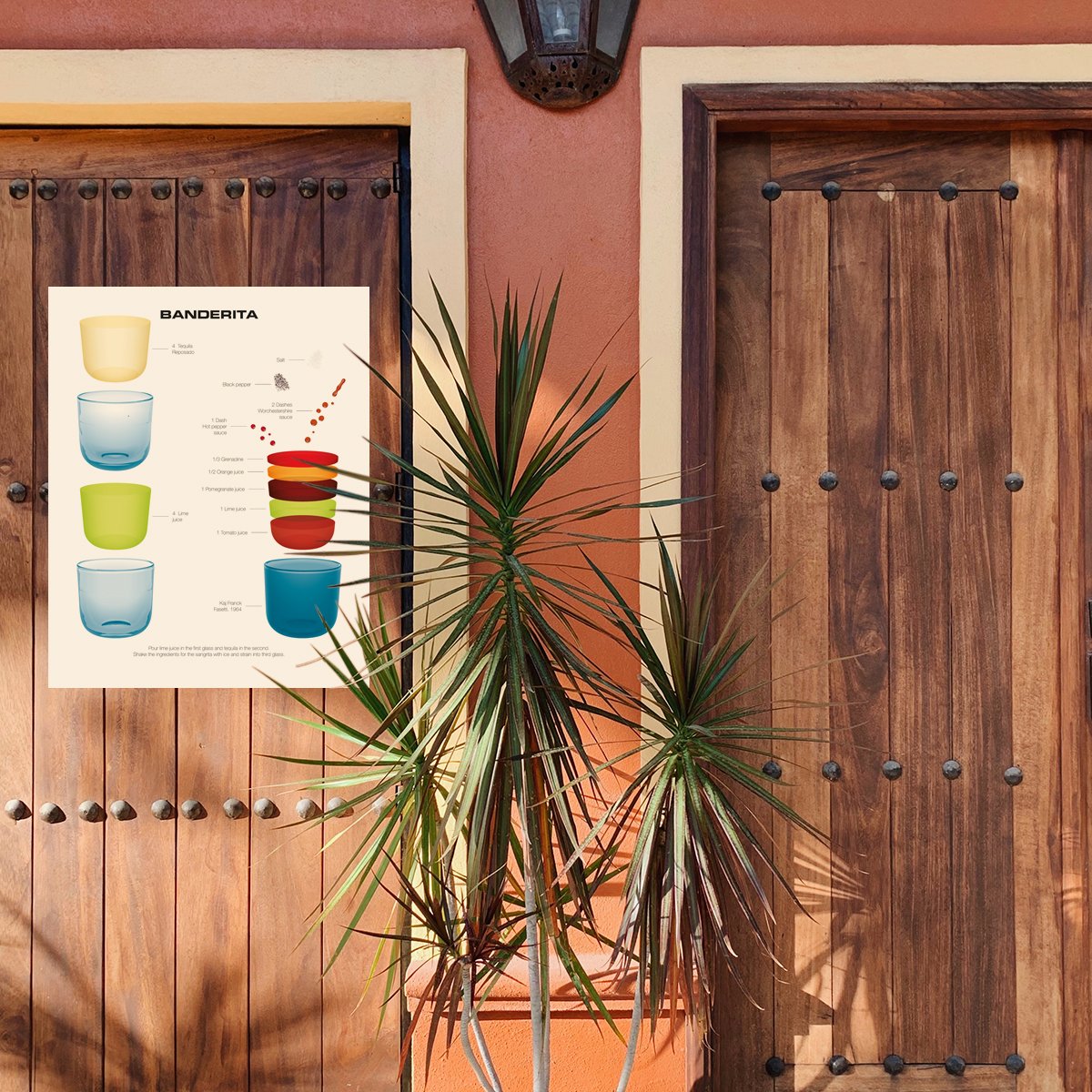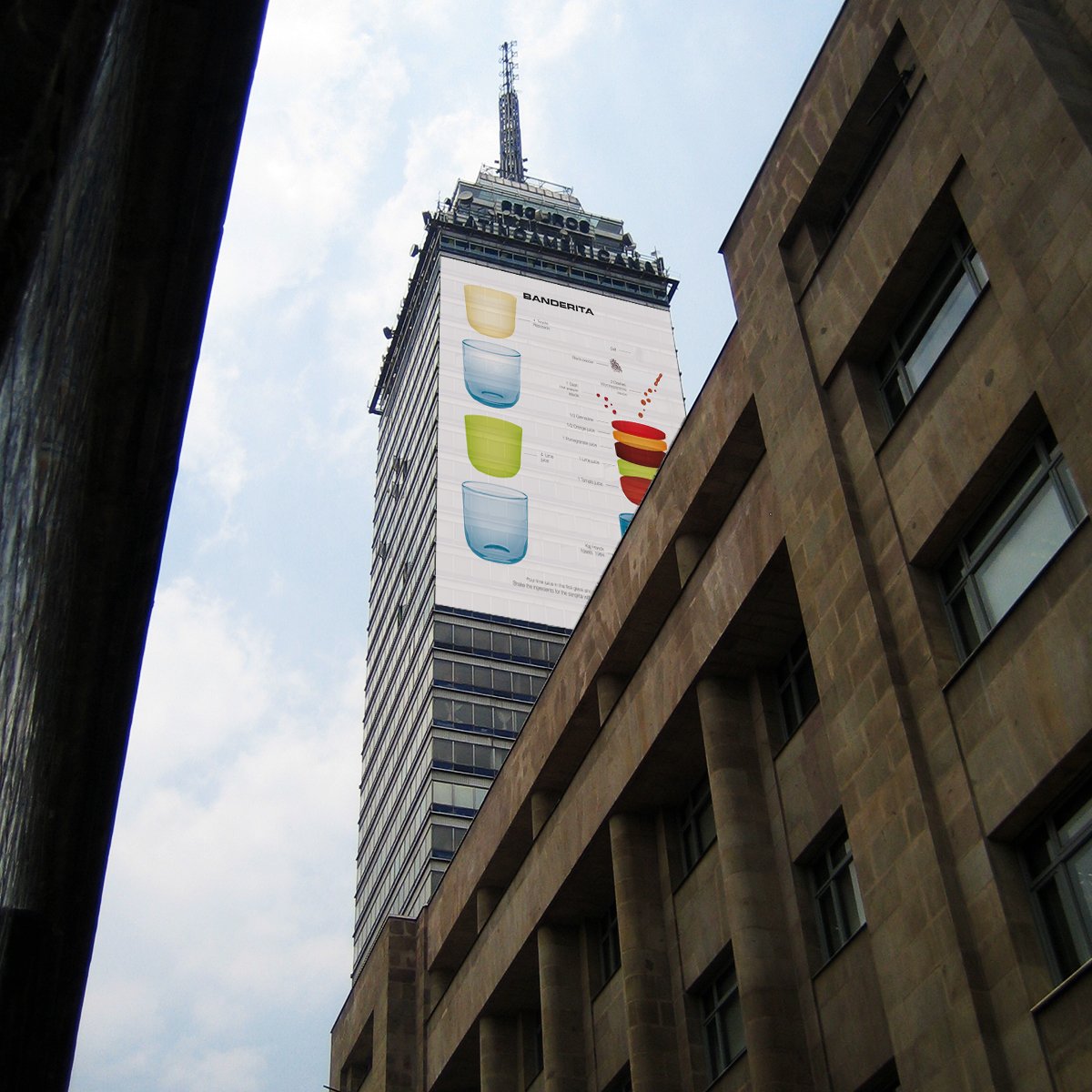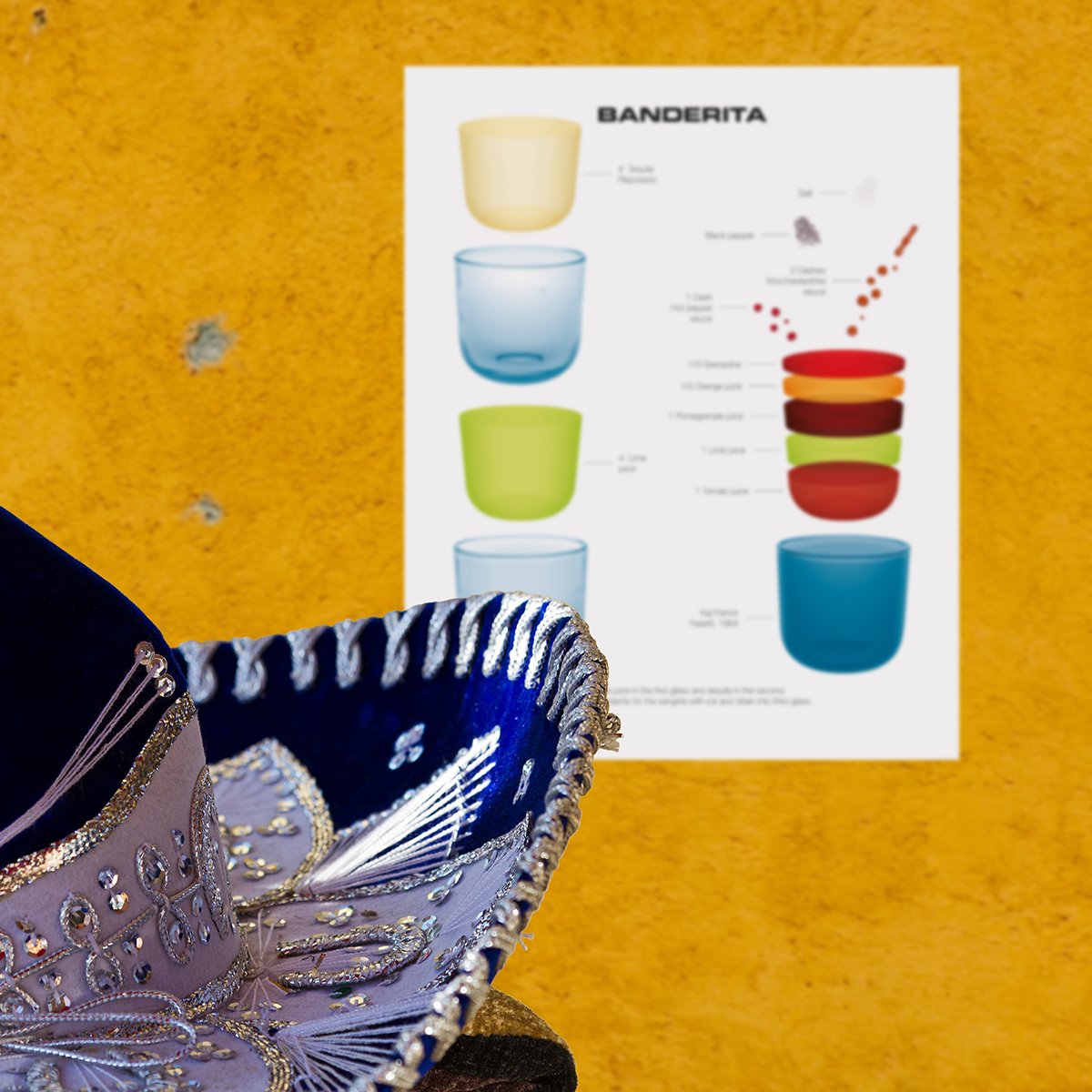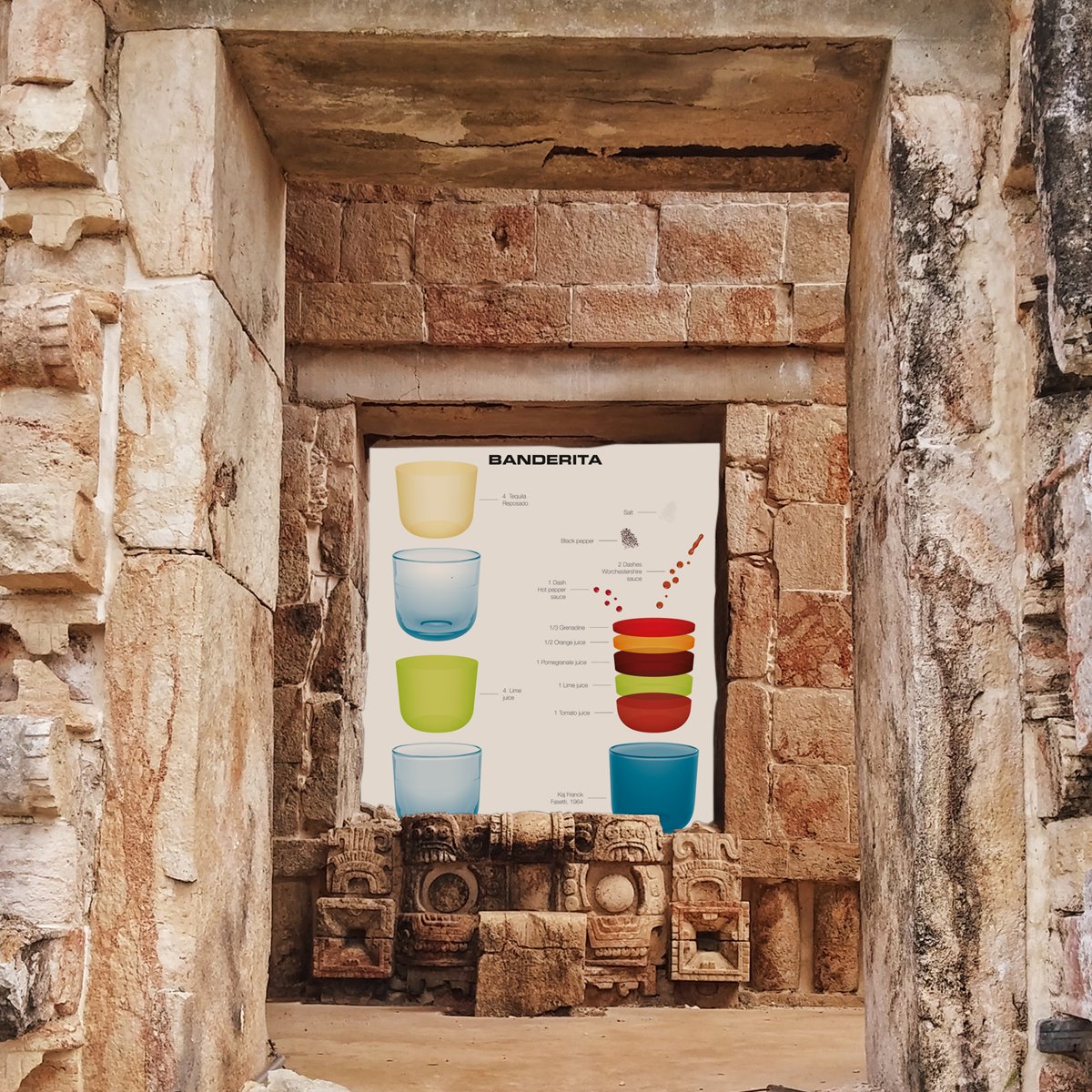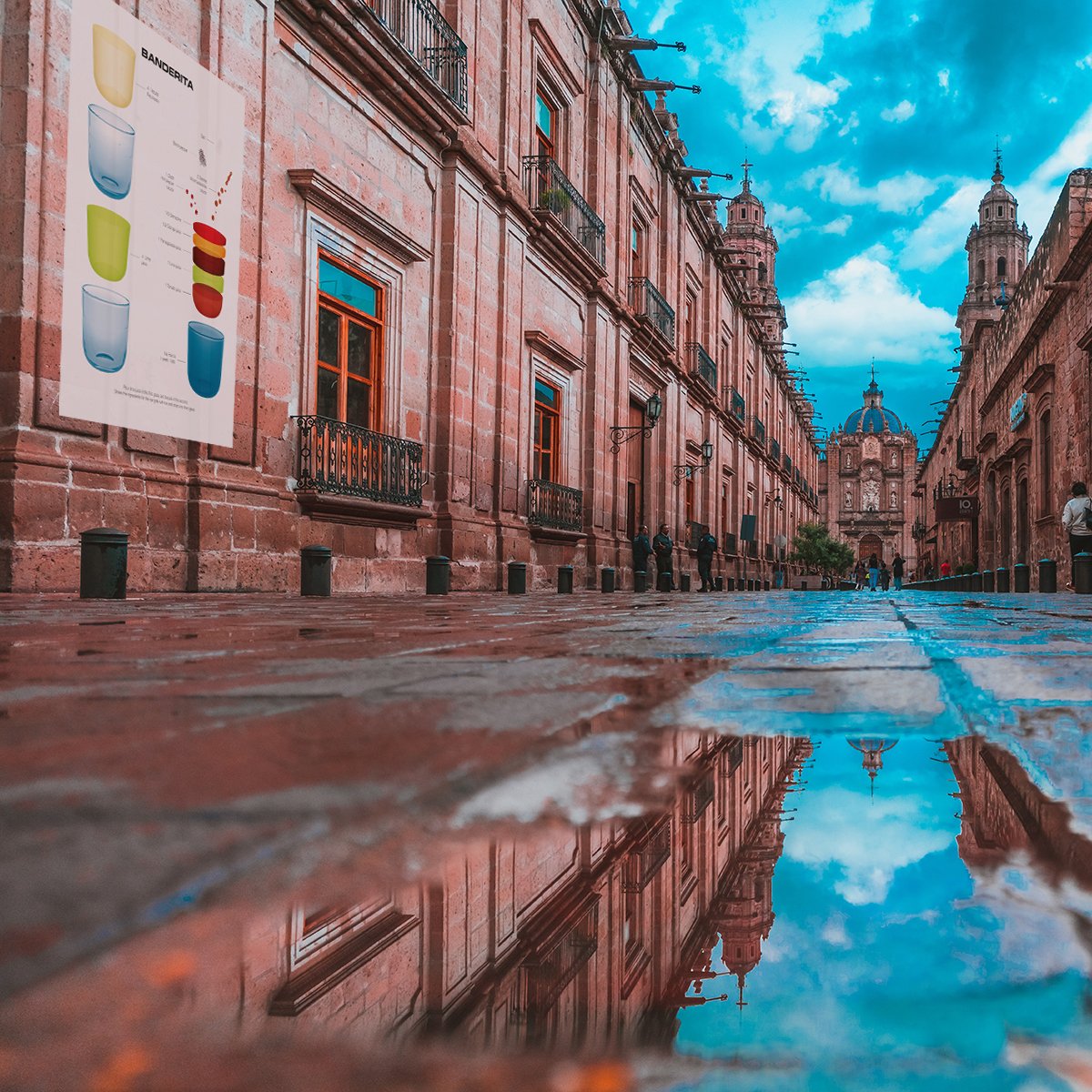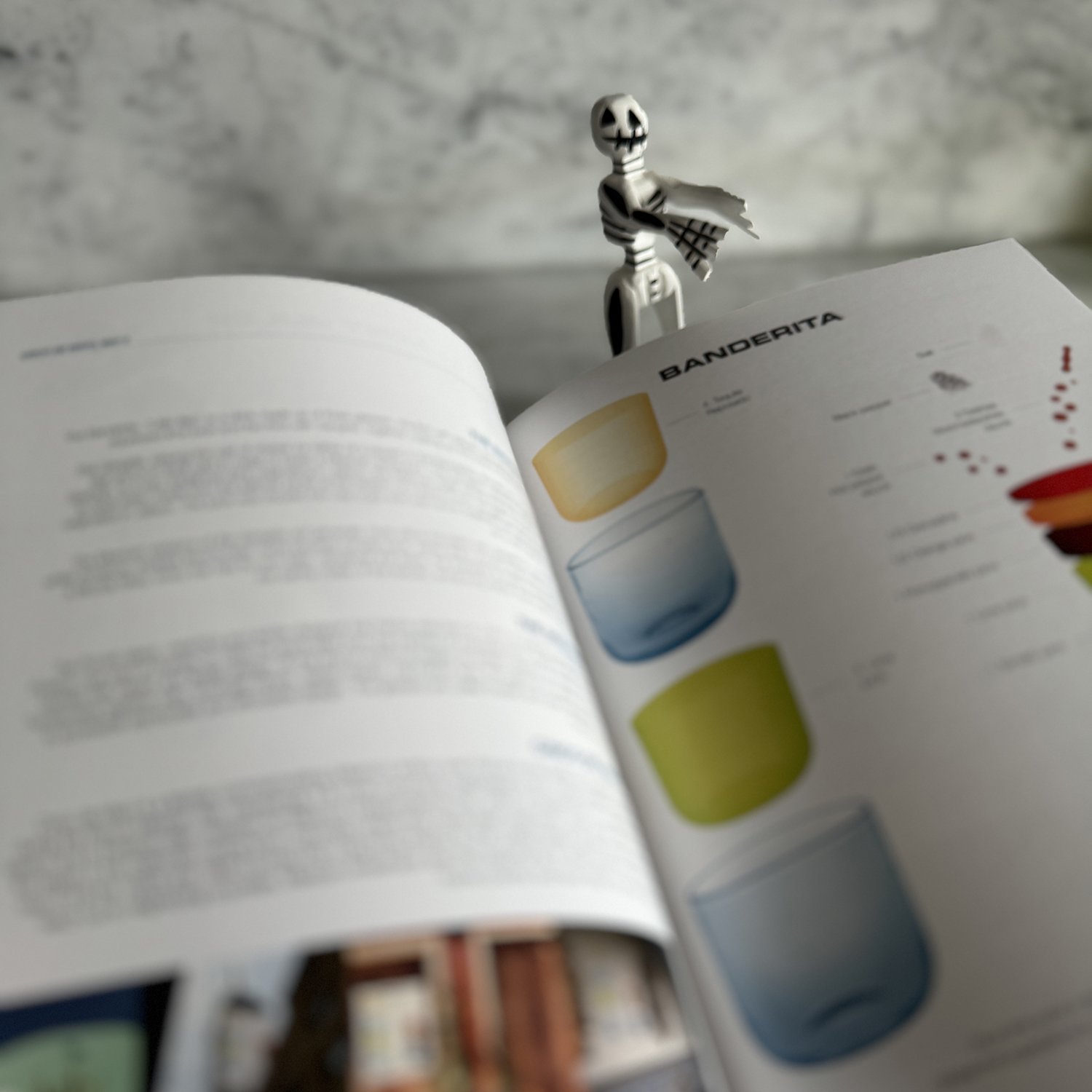In 1898 an American engineer, Jennings Stockton Cox, led a mining exhibition in the small town of Daiquiri in Cuba. While entertaining guests when he ran out of gin. To keep the party afloat Cox went out and bought rum that was readily available in Cuba. July 19 is Daiquiri Day, a perfect day to raise your glass to Jennings Stockton Cox, to Constantino Ribalaigua or to Ernest Hemingway for that matter.
THE HEMINGWAY DAIQUIRI
”El Rey de los Cocteleros”, or Constantino Ribalaigua Vert, was born in 1888 and learned the trade from his father. At 26 he tended the bar at El Floridita, at 30, in 1918, he had made enough money to buy the bar. During thirty years Constante, as his customers called him, invented more than 200 cocktails, catering to a flow American tourists. The amount of tourists coming to Havana doubled during Prohibition from 45,000 per year in 1916 to 90,000 in 1926.
One of the most famous of El Floridita’s customers was undoubtedly Ernest Hemingway. In the early 1930’s being fairly new to the city, Hemingway was on the way back to his hotel when he ventured into El Floridita in search of a restroom. Some guests were going on about their excellent daiquiris. Hemingway ordered one, then asked for another, this time with less sugar and double the rum. That was the birth of the Papa Doble (Papa after his Cuban nickname and Doble for the double amount of rum). This first version was way too strong to be enjoyed by any other than Hemingway. He boasted having had 17 Papa Dobles in one go in 1942, amounting to about 1.5 liters of rum.
Over time Ribalaigua added grapefruit juice and maraschino to the rum and fresh lime juice. Ribalaigua gave this modified Papa Doble the name Hemingway Daiquiri.
THE DESIGNER
The glass, Model I-103 was designed in 1956 by Timo Sarpaneva.
The Masterful Hungerburgbahn in Innsbruck
This funicular railway with all of its 4 stops designed by Zaha Hadid is probably the best way to get a look of Innsbruck from above.
La Pasta Italiana: Rigatoni
The history of rigatoni pasta is a fascinating journey through Italian culinary traditions. Rigatoni, whose name comes from the Italian word ”rigato” meaning ”ridged” or ”lined,” is a tube-shaped pasta with ridges on the exterior.
Originating in central and southern Italy, particularly in Rome and Sicily, rigatoni has been a staple of Italian cuisine for centuries. While the exact date of its invention is unclear, it likely emerged during the late Middle Ages or early Renaissance period when pasta-making techniques were becoming more sophisticated.
The distinctive ridged texture of rigatoni serves a practical purpose. These ridges allow the pasta to hold onto sauces more effectively, enhancing the overall flavor of dishes. This design also makes rigatoni ideal for baked pasta dishes, as it can withstand longer cooking times without losing its shape.
Traditionally, rigatoni was made by hand, a labor-intensive process that required skill and patience. Pasta makers would wrap dough around thin rods to create the tubular shape, then carefully remove the pasta and let it dry. This method ensured that each piece of rigatoni had a consistent shape and texture.
As pasta production became industrialized in the 19th and 20th centuries, rigatoni became more widely available. The invention of pasta extruders allowed for mass production while maintaining the characteristic ridged exterior.
Rigatoni has played a significant role in many classic Italian dishes. In Rome, it’s often served with pajata, a sauce made from veal intestines. In Sicily, it’s commonly used in pasta al forno, a baked pasta dish. The versatility of rigatoni has also made it popular in modern fusion cuisines around the world.
Today, rigatoni continues to be a beloved pasta shape, available in various sizes and even gluten-free versions. Its enduring popularity is a testament to its versatility and the timeless appeal of Italian pasta traditions.
The World Mojito Day
The Piña Colada Day was declared a holiday by Ricardo A. Cofresí in Puerto Rico in 1978, in honor of the drink, now known as a symbol of Caribbean culture. The best place to experience it is definitely at its birth place at the Caribe Hilton in Puerto Rico.
THE PIÑA COLADA
Piña Colada, means strained pineapple, and is referring to the freshly pressed and strained pineapple juice in the drink. The first time a drink named Piña Colada was mentioned in print was in an issue of Travel Magazine from December 1922. It was made with Bacardi Rum, pineapple juice, lime and sugar but most importantly, it did not include coconut. The name however, fits very well with this pineapple cocktail.
Nowadays, a Piña Colada is generally thought of as a creamy coconut-tasting drink and the original is usually referred to as a Cuban-style Piña Colada. The modern Piña Colada was invented on August 15, 1952 (the Caribe Hilton say 1954), after three months of hard work. Ramón “Monchito” Marrero Perez, the head barman at the Caribe Hilton in Old San Juan, Puerto Rico was trying to create a signature cocktail for the hotels Beachcomber Bar. He eventually landed on the Piña Colada possibly just adding Coco López cream of coconut, a new product in Puerto Rico at the time, to the existing Cuban drink. The change was big enough though to be considered an entirely new drink.
For 35 years Mr. Perez personally served Piña Coladas at the Caribe Hilton, making it so popular it was made the official drink of Puerto Rico in 1978. In 2004 the Caribe Hilton was presented with a official proclamation signed by Sila María Calderon, the Governor of Puerto Rico, in honor of the 50 year anniversary of the famous cocktail.
THE DESIGNER
The glass was designed by Agustina Bottoni in 2020 and is called High Spirits.
The Piña Colada Day
The Piña Colada Day was declared a holiday by Ricardo A. Cofresí in Puerto Rico in 1978, in honor of the drink, now known as a symbol of Caribbean culture. The best place to experience it is definitely at its birth place at the Caribe Hilton in Puerto Rico.
THE PIÑA COLADA
Piña Colada, means strained pineapple, and is referring to the freshly pressed and strained pineapple juice in the drink. The first time a drink named Piña Colada was mentioned in print was in an issue of Travel Magazine from December 1922. It was made with Bacardi Rum, pineapple juice, lime and sugar but most importantly, it did not include coconut. The name however, fits very well with this pineapple cocktail.
Nowadays, a Piña Colada is generally thought of as a creamy coconut-tasting drink and the original is usually referred to as a Cuban-style Piña Colada. The modern Piña Colada was invented on August 15, 1952 (the Caribe Hilton say 1954), after three months of hard work. Ramón “Monchito” Marrero Perez, the head barman at the Caribe Hilton in Old San Juan, Puerto Rico was trying to create a signature cocktail for the hotels Beachcomber Bar. He eventually landed on the Piña Colada possibly just adding Coco López cream of coconut, a new product in Puerto Rico at the time, to the existing Cuban drink. The change was big enough though to be considered an entirely new drink.
For 35 years Mr. Perez personally served Piña Coladas at the Caribe Hilton, making it so popular it was made the official drink of Puerto Rico in 1978. In 2004 the Caribe Hilton was presented with a official proclamation signed by Sila María Calderon, the Governor of Puerto Rico, in honor of the 50 year anniversary of the famous cocktail.
THE DESIGNER
The glass was designed by Agustina Bottoni in 2020 and is called High Spirits.
The 1962 Seattle World's Fair
These fantastic vintage glasses from the 1962 Seattle World’s Fair are the perfect vessel for a summery long drink, specially The Space Needle created by Trader Vic. Thank you @vignettesbymelissa for this amazing addition to the home bar. I absolutely love them!
THE SPACE NEEDLE
1 1/2 oz Light Puerto Rican Rum
1 1/2 oz Dark Jamaican Rum
1 oz Curaçao
1 1/2 oz Lemon Juice
3/4 oz Orgeat
Blend in a mixer with one scoop of ice.
THE HISTORY
The 1962 Seattle World’s Fair, known as Century 21 Exposition, was a transformative event for Seattle. Held from April 21 to October 21, it attracted nearly 10 million visitors. The fair’s theme focused on science, space, and the future, reflecting the era’s Space Race.
Key attractions included the iconic 605-foot Space Needle, the U.S. Science Exhibit (now Pacific Science Center), and the Monorail. The fair required significant infrastructure improvements, including downtown beautification and transportation upgrades.
Century 21 served national interests during the Cold War, showcasing American scientific prowess. It also aimed to inspire youth to pursue science careers and influence international opinion favorably toward the U.S.
The fair’s legacy is still evident in Seattle Center, a permanent cultural complex. It contributed to Seattle’s transformation from a regional city to a global player, laying groundwork for its current status as a tech hub.
The event embodied a spirit of innovation and forward-thinking that continues to shape Seattle’s identity. Its impact on culture, architecture, and aspirations makes it a defining moment in Seattle’s journey to becoming a 21st-century global city.
Great Tennis and a Great Drink
Wimbledon is considered to be the oldest tennis tournament in the world. The first Championships were held at the All England Croquet and Lawn Tennis Club in Wimbledon, 1877. Since 1971, when the first Pimm’s Bar opened at Wimbledon, the Pimm’s Cup has been their signature drink. Each year an incredible 300,000 Pimm’s Cups are served during the 14 days long tennis tournament.
THE PIMM’S CUP
James Pimm was a shellfish monger born in Kent in Southern England. At the age of 30 he was already the owner of five London oyster bars, often frequented by the Royal Family. Sometime between 1823 and 1840 he invented a herbal tonic to help digestion. The “house cup”, as it was called in the oyster bar, was made with gin, quinine, caramelized orange and a carefully selected secret range of herbal botanicals and spices. It was so popular Mr. Pimm bottled it, as Pimm’s No.1 Cup, named after the cup (a small tankard) it was originally served in, and started marketing it as a health tonic. With sales on the rise Pimm branched out and in 1851 he started making a Pimm’s No.2, with Scotch whisky, and No.3 with brandy. By 1859 Pimm started selling his own gin, and six years after that Pimm’s was available all throughout the British Empire. Before his death in 1866 James Pimm had sold his company and the rights to his name to a Fredrick Sawyer who, after 20 years, sold it to the Mayor of London, Lord Horatio Davis.
Alongside the original, No.2 and No.3, through the years there has been a No.4 with rum, No.5 with rye whiskey, No.6 with vodka and lastly No.7 with tequila. Today, only the No.1 and No.6 is left on the market with the No.3 brandy version appearing seasonally as Pimm’s No.3 Winter Cup.
THE DESIGNER
The Tank Highball glass was designed by the British designer Tom Dixon in 2014.
Finnish Design at its Best
Alvar Aalto was Finnish architect and design pioneer born in 1898. Known for his organic designs, Aalto's career was marked by a blend of architecture, furniture, and glassware, making him a key figure in Scandinavian modernism. His innovative approach to materials and forms, particularly his use of laminated wood and glass, set him apart in the design world.
One of Aalto's most iconic creations is the Savoy Vase, also known as the Aalto Vase. The story of this vase begins in 1936 when Aalto, alongside his wife Aino, entered the Karhula-Iittala Glass Design Competition. Their oflyt named entry "Eskimoerindens skinnbuxa" (Eskimo woman’s leather trousers), won first prize. The vase's design, was inspired by various sources, including the leather breeches of a traditional Sami woman, waves in water, and the contours of Finland's lake-rich landscape. The name "Aalto" itself means "wave" in Finnish, adding another layer of meaning to the design.
The Savoy Vase, created for the interior of the Savoy Restaurant in Helsinki, which the Aaltos were designing at the time. The vase's production posed significant manufacturing challenges, using a wooden mold that was slowly burned away, a technique that highlighted the vase's organic nature. Today, each vase is still hand-blown at Iittala, maintaining the original hand-crafted quality.
The vase gained international acclaim when it was presented at the 1937 Paris World's Fair, thereby cementing Aalto's reputation as a master of modern design.
In 1935 Aino and Alvar Aalto founded the company Artek together, with the aim of producing and selling their designs. Aino Aalto was the head designer and at Artek she created both glassware and furniture design.
To this day the Savoy Vase remains one of Alvar Aalto’s most famous and best appreciated designs. It is a great symbol of thee Aalto legacy.
Happy King Kamehameha Day!
King Kamehameha Day was proclaimed a national holiday on December 11, 1871 by King Kamehameha V to celebrate his grandfather, King Kamehameha the Great, the father of the Hawaiian Kingdom. Originally the people of Hawai’i wanted to honor Kamehameha V on his birthday on December 11, but being a humble chief he chose a date as far away from his own birthday as possible, June 11. Every year, a statue made in Italy in 1883, honoring King Kamehameha I in downtown Honolulu is draped with 90 thirty-foot flower leis. King Kamehameha Day is celebrated all over the Hawaiian islands with parades, dances and flower decorations.
THE ROYAL HAWAIIAN
Princess Ka’iulani was born in 1875 to Hawaiian Princess Miriam Likelike and Scottish-born businessman Arthur Cleghorn. At age 11 she lost her mother and at 13 she was sent to England to get a British education. While in England, in 1891, the King passed away and his sister, Lili’oukalani became Queen making Ka’iulani the heir apparent. When Ka’iulani finally came back in 1897 Queen Lili’oukalani had been forced to abdicate and a year later Hawaii was annexed by the US, something Princess Ka’iulani fought hard to stop. Having struggled with poor health during the 1890s the devastated Ka’iulani died in 1899, only 23 years old. Twenty eight years later, a pink palace, the Royal Hawaiian Hotel opened in Honolulu. During the 1920s they created a signature cocktail named Princess Ka’iulani as a tribute to the princess. The cocktail changed name in the 1950s to Royal Hawaiian, but the legacy of Princess Ka’iulani lives on as a symbol of strength, grace, and the rich cultural heritage of Hawai’i.
THE DESIGNER
The glass for the Royal Hawaiian is fittingly called Princess and was designed by Danish architect and designer Bent Severin in 1957.
THE ROYAL HAWAIIAN
3 parts Gin
2 parts Pineapple juice
1 1/2 parts Orgeat
1 part Lemon juice
Shake ingrediens with ice until well chilled. Strain into chilled glass. Garnish with an orchid.
Happy King Kamehameha Day!
Home Made Pasta From Sicily
The Casarecce pasta originated in Sicilia and got its name from the Italian word “casareccio” meaning home made. The distinctive scroll like shape is obtained by rolling small rectangles of dough round a thin wooden stick or metal rod called a “ferro”. This process creates a pasta with the perfect amount of nooks and crannies to evenly distribute the pasta sauce to every forkful.
If the Casarecce isn’t home made the best commercially made pasta is produced with a bronze die, creating a rougher pasta surface that is even better at catching sauce than the home made version.
In Sicily, Casarecce is often served with traditional dishes from the region such as Sicilian pistachio pesto or seafood and fish like swordfish.
A New York Style Swedish National Day
LAUNCH OF SEX AND THE CITY
Based on author Candace Bushnell’s newspaper column and later book anthology the HBO comedy-drama Sex and the City, first aired on June 6, 1998. After 94 episodes and six seasons the last episode was released on February 22, 2004. As June 6 is also the Swedish National Day and that the Cosmo is made with Absolut Vodka it is a great reason to have a Cosmopolitan today.
THE COSMOPOLITAN
Even though the Cosmopolitan isn’t that old, the origin isn’t quite clear. It might have been invented in 1985 by Miami bartender Cheryl Cook at a South Beach bar called the Strand. Wanting to make a perfect cocktail for a Martini glass, Cook used the Kamikaze as a base, used citrus-flavored vodka and added a splash of cranberry juice.
Maybe more likely, it was first invented by bartender Toby Cecchini in 1988 when he was working at Odeon in New York’s Tribeca. Odeon was one of the trendiest bars of the 1980s, frequented by celebrities like Madonna, Robert DeNiro and Andy Warhol. An Odeon waitress had tried a new cocktail in San Francisco made with vodka, Rose’s Lime and grenadine. Liking the idea but hating the taste Cecchini wanted to make something less sweet and artificial. He used Absolut Citron, just released in 1988, added Cointreau, lime juice and a splash of cranberry juice. Soon Madonna, Basquiat, Lou Reed and Andy Warhol were sipping Cosmos and before long NY was flooded with them.
Ten year later, when New Yorkers were sick of them, in steps the characters of Sex and the City. The Cosmo didn’t actually appear until the second season, in 1999, but it soon became as important as the Manolos. The glamorous life of the “Fab Four” was unobtainable for most fans but anyone could afford a Cosmopolitan.
THE DESIGNER
The glass is called Margot and was designed by Ferrone in 2013.
Inspired By Ugliness
Konstantin Grcic was born in 1965 in Munich but was brought up in Wuppertal, a city in the industrial part of Germany. The city is considered to be one of the ugliest cities in the whole country. “Growing up there created an awareness in me that there is beauty in ugliness” as Mr. Grcic describes it.
During the 1980s he studied cabinet making at Parnham College in British Dorset after which he continued studying Industrial Design at the Royal College of Art in London and worked for a while with Jasper Morrison. In 1991 Grcic went back to his home country to start his own design studio, Konstantin Grcic Industrial Desig, in Munich. Throughout his career Grcic has been fascinated by the industrial process following the footsteps of designers like Marcel Breuer, Vico Magiatretti, Gerrit Reitveld and Achille Castiglioni.
The Chair One was designed for the Italian design company Magis in 2004 and is a great example of Konstantin Grcic’s approach to design.
Celebrate Like a Mexican
The tequila brand Cenote initiated World Paloma Day as recently as in 2019 to promote the National Drink of Mexico. Cenote Tequila gets its name from the magnificent underground sweet water cave systems of the Yucatán Peninsula.
THE PALOMA
More popular in Mexico than the Margarita the Paloma, meaning dove in Spanish, might have gotten its name from a popular Mexican folk song from the 1860’s even though it was created almost 100 years after the song. The Paloma isn’t actually that commonly found on bar menus in Mexico. It is rather a drink you have at home, letting your guests mix their own from tequila and mixers. Squirt, the first grapefruit soda and commonly used in Palomas, was created in Phoenix, Arizona in 1938. It was advertised as a great mixer with tequila in 1950 but wasn’t actually exported to Mexico until 1955 so the cocktail probably saw the light of day sometime after that. It might have been the creation of Don Javier Delgado Corona the then owner and bartender at La Capilla in Tequila, Mexico. Correct or not, what is known is that Don Javier created another classic, the Batanga, in 1961. The Batanga is more or less a Rum and Coke with tequila instead of rum and, of course, with a salt rim.
THE DESIGNER
The Finnish designer Saara Hopea was born in Porvoo, Finland in 1925. She was the granddaughter of goldsmith Samuel Mika Westerlund where her father worked as a manager. After studying at the Central School of Industrial Design in Helsinki she worked at a metalsmith company before joining Nuutajärvi glassworks. During her career Hopea worked with jewelry design, enameling, textile design as well as glass design. The Stacking Glass was designed by Saara Hopea in 1951.
Dolly And Tennessee Whiskey
Today we celebrate International Tennessee Whiskey Day.
On May 5, 2021 the Tennessee General Assembly declared May 21 as International Tennessee Whiskey Day to commemorate that Tennessee, (more than three years after Prohibition ended), repealed the ban on manufacturing alcoholic beverages. However, nine out of their 95 counties are still dry, like Moore County where Jack Daniel’s is distilled.
THE LYNCHBURG LEMONADE
In 1980 Tony Mason, a restaurant owner in Huntsville Alabama, created the Lynchburg Lemonade. It was named after the city of Lynchburg, Tennessee, home of Jack Daniel’s Distillery. Two years later a representative of the distillery visited the restaurant, tried the drink and was told how to make it. When Jack Daniel’s started promoting the lemonade as their signature drink a year later, without mentioning the name of its creator, Mr. Mason would have none of it. He sued the distillery and sought compensatory and punitive damages. Unfortunately for Mr. Mason, he lost getting only $1, and Jack Daniel’s still promotes the drink without a word about Tony Mason.
Sometime in the 1850s Jasper “Jack” Newton Daniel left home and started working for Dan Call, preacher, grocer and distiller. Being a busy man Call asked one of his slaves, Nathan “Nearest” Green, to teach Jack everything he knew about distilling whiskey. Mr. Green knew a lot, he was essentially Master Distiller for Reverend Call. When Jack Daniel’s was established in 1866, a year after the abolition of slavery, it was one of the first distilleries registered in the United States. To this very day the original recipe is used when producing Jack Daniel’s and even though they refer to the product as Tennessee Whiskey, the product meets every legal requirement to be called a Bourbon.
THE DESIGNER
The glass is called Puzzle and was designed by Ettore Sottsass in 2003 for Venini.
So put on some Dolly Parton, make yourself a Lynchburg lemonade and join the celebrations.
From One Swiftie to Another
Considering that Stockholm is experiencing a total Taylor Swift craze with three concerts on May 17 through 19 why not celebrate with her alleged favorite cocktail, the French Blonde. It’s a summery blend of Lillet, Gin, Elderflower liqueur, pink grapefruit juice and lemon bitters.
As usual with cocktail history the origin is a bit murky. Even the year of creation is vastly different from one story to another. The French Blonde might have first been mixed at a Parisian bar in the 1920s. Inspired by the classic French 75 the bartender wanted to create a cocktail with a feminine twist, giving it the name French Blonde as the color of the drink resembles blond hair.
Another story is that it was made by a bartender in New York in the 1950s. Also in this version the inspiration came from the French 75 but the idea was to create a modernized version of the WWI cocktail by adding the elderflower liqueur.
This said, I have found neither any confirmation of these stories nor any early recipes of the French Blonde. Which takes us to the Difford’s Guide where you can read that the cocktail was actually first published in Saveur.com in 2011, created by Caraline Bianchetto Chase. This might be the most plausible story of the three.
The glass is called Travasi and was designed in 2023 by Astrid Luglio.
By the way. Apparently Taylor Swift’s favorite color is purple, hence the sudden change of glass color.
Also, if you apply the discount code SWIFTIE at checkout you will get 20% off Taylor Swift’s favorite cocktail.
From Hawaii to Oakland
This drink is also known as the Scorpion Bowl as it was originally made and served in a communal bowl for up to 15 people. The Scorpion is attributed to tiki pioneer Victor Bergeron aka Trader Vic, but rather than inventing it Trader Vic found it on a trip to Hawaii at a bar called the Hut in Honolulu. At the time of Bergerons travel the base ingredient was the local Hawaiian spirit Okolehao, made from the fermented and distilled root of the Ti plant. The Hawaiians were taught the distillation process by British sailors in the 1790s. In fact, the Okolehao became so popular in Hawaii that King Kalākaoa had his own Okolehao distillery. On a side note, the king was often referred to as The Merrie Monarch thanks to his habit of entertaining his guests by singing and playing the ukulele. When King Kalākaoa died in 1891, his sister Lili’uokalani took over the throne and became the last monarch of Hawai’i.
Back in California Trader Vic modified the Scorpion by changing the Okolehao to the easier to come by rum. He kept the idea of a communal bowl and had a custom bowl made specifically for the Scorpion. In Mr Bergeron’s “Book of Food and Drink” from 1946 the recipe contained 15 ingredients, like one and a half bottles of rum, gin, brandy and half a bottle of white wine along with the fruit juices. It was made for 12 people though. Over the years Mr Bergeron modified the recipe quite a bit, simplifying the long list of ingredients and even made a single serve option. The one thing Trader Vic kept throughout the recipes is the Gardenia as a garnish.
The glass is called Iris and was designed in 2009 by the Swedish glass designer Ann Wåhlström.
The Flower and the Cocktail (Mimosa Day)
Being Mimosa Day, why not give the Mimosa an extra kick by adding some Grand Marnier to the drink, making it a Grand Mimosa. Since it’s supposedly a favorite aperitif in the British Royal Family (along with the Dubonnet Cocktail) it is a perfect drink to enjoy on a warm day in May.’
THE MIMOSA
The Mimosa got its name from the delicate yellow Mimosa flower. It is essentially a fruitier Buck’s Fizz and was created in 1925 by a bartender called Frank Meier at the Ritz Hotel in Paris. Interestingly, in Frank Meier’s own cocktail book “The Artistry of Mixing Drinks” from 1936 Meier listed 300 cocktails marking the ones he had created with a symbol. The Mimosa never got one. It might have been a printer’s error or he never actually invented it. The Mimosa calls for equal measures of champagne and freshly squeezed orange juice served over ice whilst the Buck’s Fizz uses 1 part orange juice to 2 parts champagne without the ice. Some suggest the Mimosa was first made in San Francisco in the 1940’s by none other than Sir Alfred Hitchcock but as it appeared in Frank Meier’s cocktail book in 1936, that’s not very likely. That said, Hitchcock was, along with Royal Family, essential in making the Mimosa popular in the United States. In 1961 the London correspondent of the Sydney Morning Herald reported that “The Queen, the Duke of Edinburgh, and the Queen Mother all have adopted a champagne cocktail they call Mimosa.” Apparently the Queen had been introduced to the drink by Louis Mountbatten, 1st Earl Mountbatten of Burma, who in turn had picked it up on a visit to France. The Mimosa appeared on brunch menus in New York in the early 1970s and has stayed ever since.
THE DESIGNER
Cesare Colombo, more known as Joe Colombo, designed the Smoke glass in 1964. It is made so that you can drink while keeping your cigarette at the ready in the same hand.
A World Filled With Cocktails
On May 13 in 1806 the first known definition of the word cocktail was published in an upstate New York newspaper, The Balance and Columbian Repository. The cocktail, as they wrote it, was described as “a stimulating liquor, composed of spirits of any kind, sugar, water and bitters”. This is also the date Giuseppe Cipriani opened Harry’s Bar in Venice in 1931, home of the Bellini.
THE BEE’S KNEES
The Bee’s Knees was possibly created by the Austrian Frank Meier, during the 1920s when he was the first head bartender at Cafe Parisian at the Ritz Hotel in Paris. During WWII and the German occupation of Paris, Mr. Meier kept the bar open but being half Jewish he started working with the French resistance and handed information about the Germans staying at the Ritz to British intelligence. He also helped Jewish hotel guests escape the concentration camp roundups by providing them with fake documents.
The first time the cocktail was mentioned was in a news article from 1929 where it was attributed to the American socialite Margaret Brown. The article was about women-only bars in Paris and Margaret Brown, being a wealthy widow, shared her time between her home in Denver, Colorado and Paris where she was a frequent guest in these women-only bars. On a side note Margaret Brown also went by her nickname “the Unsinkable Molly Brown” after being one of the 712 people surviving the Titanic in 1912. Yet another background story is that the honey used in the Bee’s Knees was added since it is a great way to hide the harsh taste of cheap bathtub gin. Putting it all together Margaret Brown might have had the cocktail in an American speakeasy and brought the recipe to Paris where Frank Meier made it his own. If so, all three origin stories could be true. But that, of course, is just mere speculation.
THE DESIGNER
Astrid Luglio designed the glass called Travasi in 2023.
Hear the Sound of Pasta
This very original pasta from the southern Italian region of Puglia, the heal of the boot if you will, is called Orecchiette, “little ears”. It is believed to have originated in the 8th or 9th centuries when Puglia was under Norman-Swabian rule, or Normanno-Svevo in Italian. With the origins this far back in time however, it is very hard to be absolutely certain how the pasta came about. Similar pasta is found both in Provence in France and in the northern parts of Liguria, the home of the Trofie, but the specific shape and the pasta seems to be a very Pugliese thing. Locally, the pasta is said to be made to look like the roofs of the Trulli houses, a very particular type of round, hut-like houses found in Alberobello in Puglia and nowhere else in the world.
The pasta is made without eggs and it is shaped by pressing your thump print into the dough to create a small bowl. This sauce-cup makes a perfect vessel to catch the pasta sauce, traditionally a tomato sauce, “orecchiette al sugo.”
Feliz Cinco de Mayo
Cinco de Mayo is a festivity commemorating Mexico’s victory over France in the Battle of Puebla in 1862, during the Franco-Mexican War. Interestingly it is more commonly celebrated in the United States than it is in Mexico and is therefore often mistaken for Mexico’s Independence Day, which is September 16. Celebrations first began in the Californian mining town Columbia where they have been held every year since 1863. But it wasn’t until the 1950s it turned into a big thing thanks to the United States government’s effort to reach out to neighboring countries. Mexican-Americans saw the opportunity to take pride in their former home country and took May 5 to their hearts.
THE BANDERITA
The Banderita, “Little flag”, is a drink made up of three glasses, the first with tequila, the second with freshly squeezed lime juice and the third with Sangrita, together making up the colors of the Mexican flag. The Sangrita, playing the role of chaser (or rather of a sipper) in the Banderita, should be considered the star and is in itself said to make or break a Mexican restaurant. The Sangrita, meaning “Little blood” in Spanish, is a very traditional drink originating in Jalisco, the Mexican state where tequila is made. It is said to have been made from the leftover juices at the bottom of a bowl of pico de gallo. The juice was poured into clay cups and was drunk together with tequila after dinner as a well needed digestif. The Mexican versions of the Sangrita are generally more citrus focused with grapefruit, orange and lime whilst American recipes tend to lean more towards tomato juice, rather like a citrusy Virgin Mary. Whatever the base, the Sangrita is there to perfectly balance the earthy notes of the tequila, enhancing its flavor.
THE DESIGNER
The glasses are called Fasetti and were designed by Kaj Franck in 1964.


























































































































